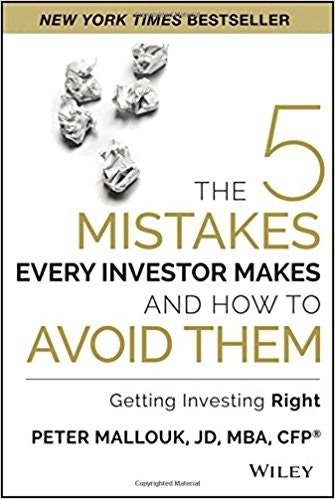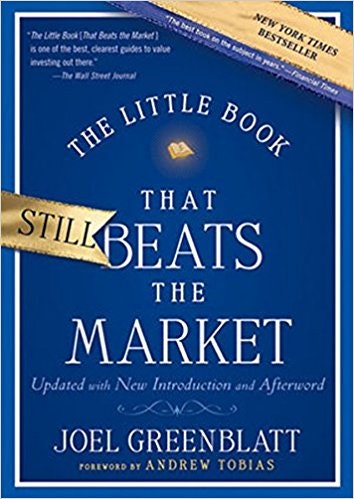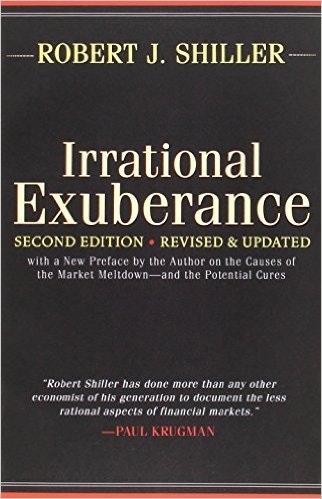We have compiled a list of thee 15 best investing books for beginners for those who are considering investing as a career or just want to build a portfolio for retirement purposes. One might be able to pick some stuff up by watching CNBC, or by reading Bloomberg, The Wall Street Journal, or other sources of information, but in order to become really proficient at investing, one must read as many books on the subject as possible.
Luckily, there are thousands of such books out there, with many written by professional investors who have amassed huge fortunes and wanted to share their skills and experiences with readers. Even luckier is the fact that a vast number of books are written either for beginners or with non-mathematicians in mind, so they are neither too complicated, nor too boring, providing a lot of useful knowledge and also getting the reader more interested in finance and investing.
Reading is an important aspect of success in many fields and investing is no exception. As was mentioned in our article covering the 15 best books on fundamental analysis of stocks, one thing that most great people have in common is that they read. A lot.

Pixabay/Public Domain
Warren Buffett used to read 1,000 pages a day when he was just starting to become one of the greatest investors of all time and still spends most of the day reading. Elon Musk, the brilliant mind behind Tesla Motors Inc (NASDAQ:TSLA) and Space X, reportedly read the Encyclopedia Britannica when he was just nine-years-old and could spend over 10 hours per day reading sci-fi novels (which is probably why Space X’s two drone ships are named “Just Read the Instructions” and “Of Course I Still Love You”, after two ships from Iain M. Banks’ “Culture” series). Jeff Bezos became a billionaire not simply by starting Amazon.com, Inc.(NASDAQ:AMZN), one of the first online book retailers and reshaping the book publishing industry, but also through his love of reading. There’s even a list circulating among Amazon.com, Inc. (NASDAQ:AMZN)’s employees referred to as “Jeff’s Reading List.”
Of course, people who only want to invest for retirement purposes don’t need to spend a lot of time reading, as they can either outsource their stock picking to mutual funds or index ETFs, or stick to some of the basics that should allow them to build a stable portfolio capable of generating low but steady returns for a very long time. However, those that want to become professional investors will have to find the time to get some serious reading done.
Getting access to books on investing is not an issue, since Amazon.com, Inc. (NASDAQ:AMZN) delivery is available in most countries with internet access and if you have a Kindle, you can get most books within seconds and pay much less than for a hard copy. In addition, investing can be easily done via the internet as well, so the only things that are required are dedication and time.
With this in mind, let’s proceed with our compilation of the 15 best investing books for beginners, which starts on the next page.
1. Rich Dad, Poor Dad
Author: Robert Kiyosaki
The beauty of Robert Kiyosaki’s “Rich Dad, Poor Dad” is that it can be read by teenagers. The book may be not go in-depth into investing, but it teaches the importance of financial literacy and promotes investments that can generate cash flow aside from potential gains from equity value (such as real estate and dividend stocks).

Photo credit: Amazon
2. The Intelligent Investor
Author: Benjamin Graham
“The Intelligent Investor” is a must-read for anyone interested in value investing and who wants to build and maintain a solid portfolio that will generate stable returns over the long run. Ben Graham, the father of value investing, suggests that the best way to invest is to use fundamental analysis to look for stocks that are under-priced relative to their inherent value. Graham also has a textbook titled “Security Analysis”, which was written before “The Intelligent Investor” and represents a more academic approach to value investing, and is thus more complicated for a beginner.

Photo credit: Amazon
3. One Up on Wall Street
Author: Peter Lynch
Written by one of the most successful hedge fund managers, “One Up on Wall Street” provides insight into Peter Lynch’s years at Fidelity Investments. Lynch managed Fidelity’s Magellan Fund between 1977 and 1990, during which the fund registered averaged annual returns of 29%. The book explains Lynch’s thought process in stock picking and is very easy to follow, as it is written in a conversational style.

Photo credit: Amazon
4. Beating the Street
Author: Peter Lynch
“Beating the Street” is Lynch’s second book, which provides further insight into his stock-picking process and helps readers understand how to analyze stocks using companies’ fundamentals. After having provided his principles in “One Up”, Lynch analyses them in “Beating the Street” and presents case studies on some of his stock picks. Because “Beating the Street” is written in the same simple way as Lynch’s previous books, both are often recommended as the best place to start for beginner investors.

Photo credit: Amazon
5. The Four Pillars of Investing
Author: William Bernstein
“The Four Pillars of Investing” provides readers with insight on the processes behind successful investing. Dr. William Bernstein helps investors understand how risk and reward work and presents a step-by-step program to build and maintain a winning portfolio. The book is also very useful for those who want to better understand the behavioral psychology behind investing.

Photo credit: Amazon
6. The 5 Mistakes Every Investor Makes and How to Avoid Them
Author: Peter Mallouk
Peter Mallouk is one of the best financial advisers in the U.S, and in this book, he explains the main mistakes most investors make, such as picking the wrong adviser. Readers are taught how to navigate through many dilemmas that they’ll face on the market and how to build the right mindset to prevent their investing from becoming too risky. The author also provides some investment techniques and explains how to stay away from emotions and avoid other actions that can get in the way of generating returns.

Photo credit: Amazon
7. The Little Book that Beats the Market
Author: Joel Greenblatt
Joel Greenblatt is the founder of Gotham Capital Management and is one of many followers of Ben Graham and Warren Buffett’s value investing approach. In his book, a New York Times bestseller, Greenblatt suggests using a special formula that identifies great companies and bargain prices. By using this approach, Greenblatt says that an investor will be able to beat the market over the long-run, even though there might be some dips along the way.

Photo credit: Amazon
8. A Random Walk Down Wall Street
Author: Burton Malkiel
“A Random Walk Down Wall Street” was written by Princeton professor Burton G. Malkiel in 1973. In the book, Malkiel argues that a consistent outperformance of the market is not possible and that the market is as efficient as it is at pricing assets, so there’s no need to identify undervalued stocks and to stick to passive investing and low-cost index funds. Even though “A Random Walk” contradicts techniques suggested by other authors, it can still be a great book for beginners, as it can show that anyone can start investing by simply buying shares of index funds.

Photo credit: Amazon
9. The Investor’s Manifesto
Author: William Bernstein
“The Investor’s Manifesto” is another book by William Bernstein that talks about risk and reward and explains how to build a long-term investment plan. Bernstein explains how to better save money and how to deal with the investment industry (financial advisers, brokers, etc.). What makes it great for beginner investors is that “The Investor’s Manifesto” sums up some basic concepts, such as sticking to low-cost index funds and passive investing.

Photo credit: Amazon
10. Margin of Safety
Author: Seth Klarman
Seth Klarman is another great investor and the manager of Baupost Group. He is also a proponent of value investing and “Margin of Safety” advocates just that. The book provides tips on investing and urges building and maintaining discipline that is required in value investing in order to persevere through short-term losses and ignore temporary headwinds in order to generate solid long-term returns.

Photo credit: Amazon
11. The Wall Street Journal Complete Money & Investing Guidebook
Author: Dave Kansas
Next up on our list of the 15 best investing books for beginners is “The Wall Street Journal Complete Money & Investing Guidebook”, which is another great book to start with if you want to better understand how investing works. It breaks down the basics and explains the terms that financial experts operate with day-to-day. In addition, the book, which is written by Dave Kansas, the editor of The Wall Street Journal’s Money & Investing Section, helps readers understand how different strategies work and talks about important market players and some of the main events in investing history.

Photo credit: Amazon
12. The Little Book of Common Sense Investing
Author: John C. Bogle
John C. Bogle is the founder of the Vanguard Group and the creator of the world’s first index fund. In his book, he explains why common sense is important when it comes to investing and why investors should stick to holding a diversified portfolio for the long-run, instead of trying to beat the market.

Photo credit: Amazon
13. The Essays of Warren Buffett
Author: Warren Buffett and Lawrence Cunningham
Every year, billionaire Warren Buffett releases an annual letter to shareholders, in which he talks about market trends, the economy, corporate finance, M&A deals, taxes, and other matters. The letters are eagerly awaited not just by Berkshire Hathaway’s shareholders, but also by the general public, which read them for educational purposes. “The Essays of Warren Buffett” represents a compilation of some of the most important shareholder letters that Buffett wrote, as selected by Lawrence Cunningham.

Photo credit: Amazon
14. Irrational Exuberance
Author:Robert J. Shiller
The “Irrational Exuberance” is a great book for those that have already read some books that advocate passive investing and an efficient market approach (such as “The Investor’s Manifesto”, or “The Little Book of Common Sense Investing”). Shiller, a 2013 Nobel Prize winner for economics, provides examples of why the market does not always act rationally and helps readers develop the right mindset to avoid some of its pitfalls.

Photo credit: Amazon
15. Stocks for the Long Run
Author: Jeremy Siegel
In his book, Wharton professor Jeremy Siegel provides an in-depth analysis of the past performance of stocks and bonds and suggests how to use this data for future returns. Siegel suggests that stocks should represent the bulk of any investor’s portfolio and he also makes the argument that the best returns are generated by passive investors with a long-term horizon.

Photo credit: Amazon
These are the 15 best investing books for beginners. The authors included in this list have managed to outline different investing approaches, either active or passive, and provide arguments in their favor. While there are many other books that an investor should read in order to better understand the industry, the books on this list are known for their easy-to-read, simple approach that should help a beginner investor fully understand the basics of investing.
Disclosure: None





